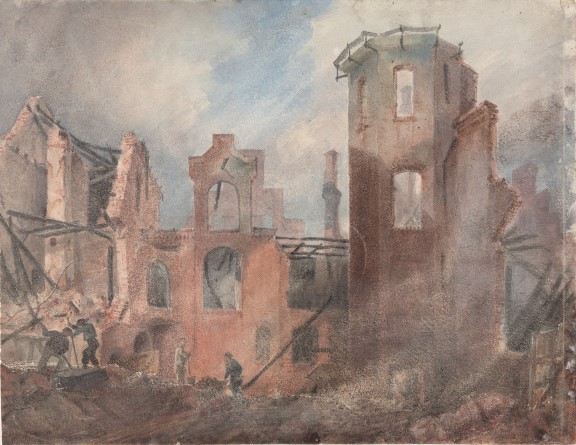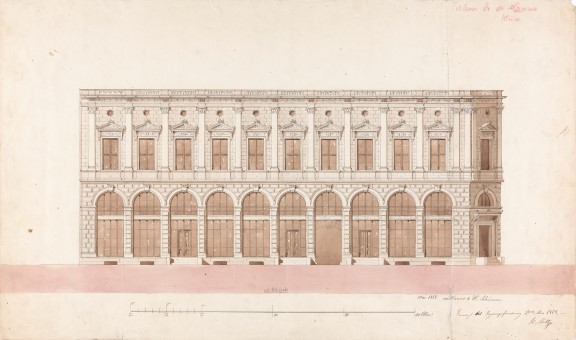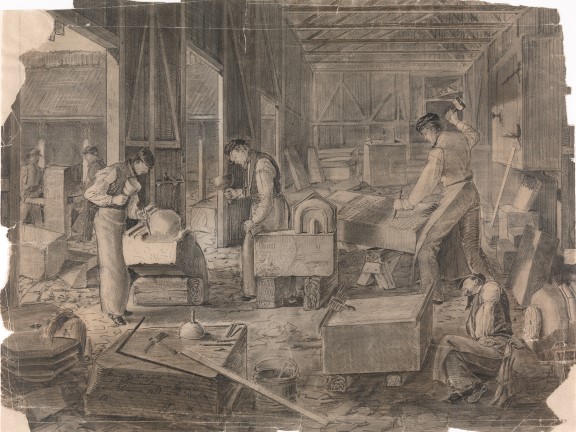
Von Hanno's painting from the fire, while the fire is still being extinguished. "Petersen's building after the fire", 1858
Photo: Nasjonalmuseet / Børre Høstland

"Peter Petersen's building in Karl Johans Gate", 1858. Architect: von Hanno and Schirmer
Photo: Nasjonalmuseet / Børre Høstland

Wilhelm von Hanno, "The Stonemason's Workshop at Trinity Church", 1852.
Photo: Nasjonalmuseet / Børre Høstland